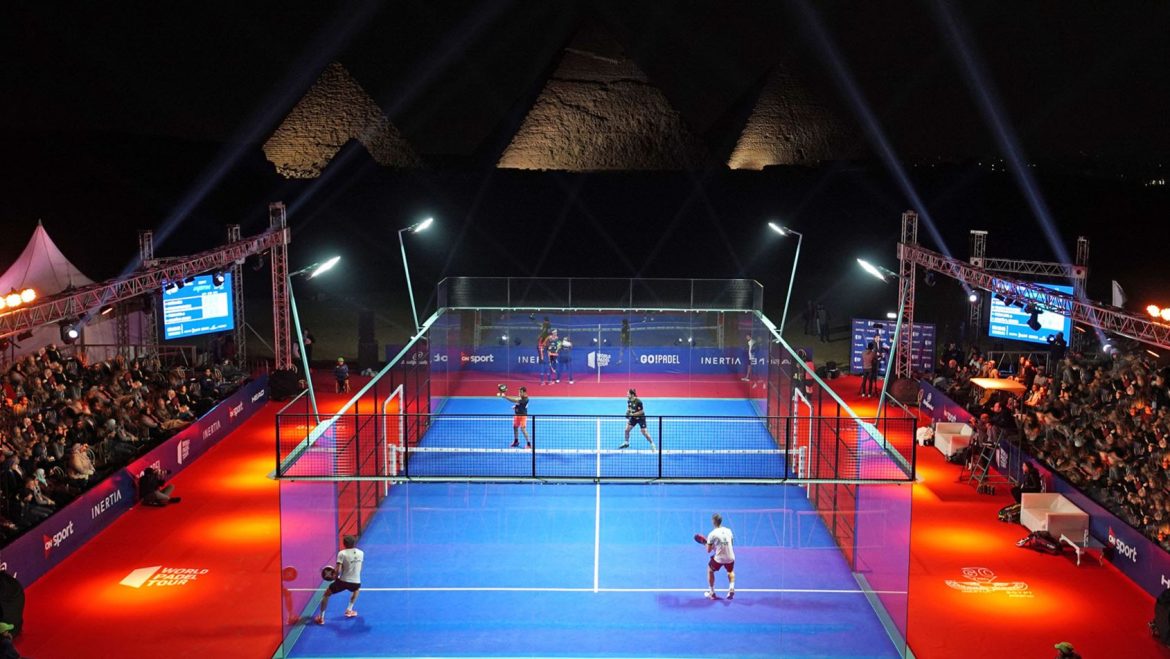Padel, the fast-growing racket sport, is attracting more and more fans around the world. The growing popularity of padel has led to the need to standardise and specify the characteristics of playing courts, particularly for competitions. Particular attention must be paid to the design and height of the padel court, which have a direct influence on the quality of play and player performance.
Standard dimensions of a padel court
The dimensions of a padel court are strictly regulated to ensure fairness in competitions. According to the Fédération Internationale de Padel (FIP), a padel court should be 20 metres long and 10 metres wide. These dimensions apply to both official competitions and leisure activities.
Characteristics of the walls and fences
The padel court is surrounded by walls or fences that play a crucial role in the game. The walls must be made of toughened glass or solid materials and be 3 metres high. Fences, on the other hand, vary in height from 3 to 4 metres and should be placed on the sides not covered by walls. They ensure that the ball stays in play and bounces predictably, which is essential for a fair game.
The Height of the Padel Net
The net is a central element of the padel court. It separates the two camps and must be stretched to a height of 0.88 metres in the centre and 0.92 metres at the ends. These specific heights must be respected to maintain the balance of the game and competitive standards.
Floor covering
The floor surface is an essential feature for player performance. In general, padel courts are made of synthetic turf, which provides excellent grip and reduces the risk of injury. However, some courts may use other materials such as porous concrete or special carpeting. The choice of surface affects the speed of the ball and the players’ movements. For competition, a uniformly flat and well-maintained surface is imperative.
Field lighting
For competitions, the lighting of the padel court must never be neglected. Lighting installations must provide uniform brightness with a light intensity of at least 400 lux. This ensures that players have optimum visibility, whatever the time of day or weather conditions, and the use of adjustable floodlights is recommended to minimise shadows and reflections that could annoy players. In addition, good lighting contributes to the visual experience of spectators, both on site and on television.
Additional equipment
In addition to the basic features of the court, some additional equipment is required for padel competitions:
- Benches for players: there must be two benches on either side of the court so that players can rest when changing sides.
- Scoreboards: these make it easier for players and the public to follow the match.
- Protective nets: these prevent balls from leaving the pitch and ensure the safety of spectators.
Official rules governing pitch design
The official rules laid down by the International Padel Federation cover all aspects of the court, guaranteeing the standardisation and quality of international competitions. For example, the rules stipulate that the net must be supported by posts no more than 1.05 metres high located outside the boundaries of the court. The posts must be securely anchored to ensure correct tensioning of the net.
Impact of Court Design on Player Performance
The design and dimensions of the padel court have a direct impact on player performance. A well-designed court allows for fluid play and optimises players’ technical abilities. The regulation dimensions ensure optimal playing space, allowing players to express themselves freely and develop complex strategies. The materials used in the construction of the walls and fencing ensure that the ball bounces predictably, which is crucial for quick reactions.
Safety standards
Safety is a major concern in the design of padel courts, especially in competition. The materials used for walls, fencing and nets must be robust but also designed to minimise the risk of injury in the event of a collision. The courts must also be equipped with a good drainage system to avoid slippery areas and ensure playability even after heavy rain. Finally, protective cushions can be added to the posts for added safety.
Competition pitches
The design and height of padel courts play a fundamental role in the quality and fairness of competitions. Respecting the official dimensions and regulations allows for an optimal playing experience for players while ensuring the safety and enjoyment of spectators. By investing in high-quality equipment and adhering to strict design standards, competition organisers are helping to raise the standard of the game and promote this exciting sport to an ever-wider audience. For those looking to install a padel court, whether for competition or recreational use, it is essential to follow these guidelines to ensure a safe, high performance playing surface.

